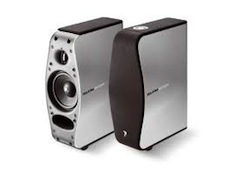It’s the time of year for saving money!

In the most recent issue of The Absolute Sound (#224) I
reviewed the Focal XS-Book powered speakers. And while in the end the XS-Books
proved to be fine desktop speakers, when I first set them up, they sounded pretty
bad. To quote myself, “In all my years as an audio reviewer, I’ve never heard a
component do a more radical Jekyll/Hyde sonic conversion as a result of playing
time.”
In the same issue Robert Harley reviewed the latest digital
integrated amplifier from NAD, the C390DD. On page 56, on the second paragraph from the
bottom Harley writes about his burn-in experience with the NAD, “The transformation
was more dramatic than I have experienced with any other components.”
Do great minds merely think alike or is there something going
on that’s larger than two writer’s egos?
If you head over to the Head-Fi site you’ll discover it’s
widely acknowledged that headphones have a break-in period. Reviewers there regularly put at lest 100
hours on a pair of cans before they try to do any serious sonic evaluations.
I bring this up because for many years a large segment of the
audiophile community vigorously denied the existence of audible component
break-in effects. I’ve received more than one email (yes, some fairly recently)
berating me for making it a standard policy to put some break-in time on a
component before serious listening. New speaker drivers need time for the surrounds to reach optimal flexibility, just as capacitors and resistors in an amplifier or crossover need some time to reach optimum linear operating temperature. The standard line about new wooden guitars is, “It takes time for the wood to realize it isn’t a tree anymore.” For audio gear it also takes time for a speaker or amplifier to realize it’s no longer merely a bunch of disparate parts, but a system.
Of course there’s another good reason for breaking in a
component. If a product is going to malfunction, it is far more likely to
happen either in the first several days of operation or at far side of its
useful life. That’s the inevitable “bathtub” failure-rate statistical curve. Personally,
I much prefer that a component break during burn-in than mid-way through a
review – less chance of it taking out other stuff down the signal chain.
But break-in is a real phenomenon. And anyone who doesn’t “believe”
in break-in simply hasn’t listened long enough or hard enough to their gear to
hear it…





